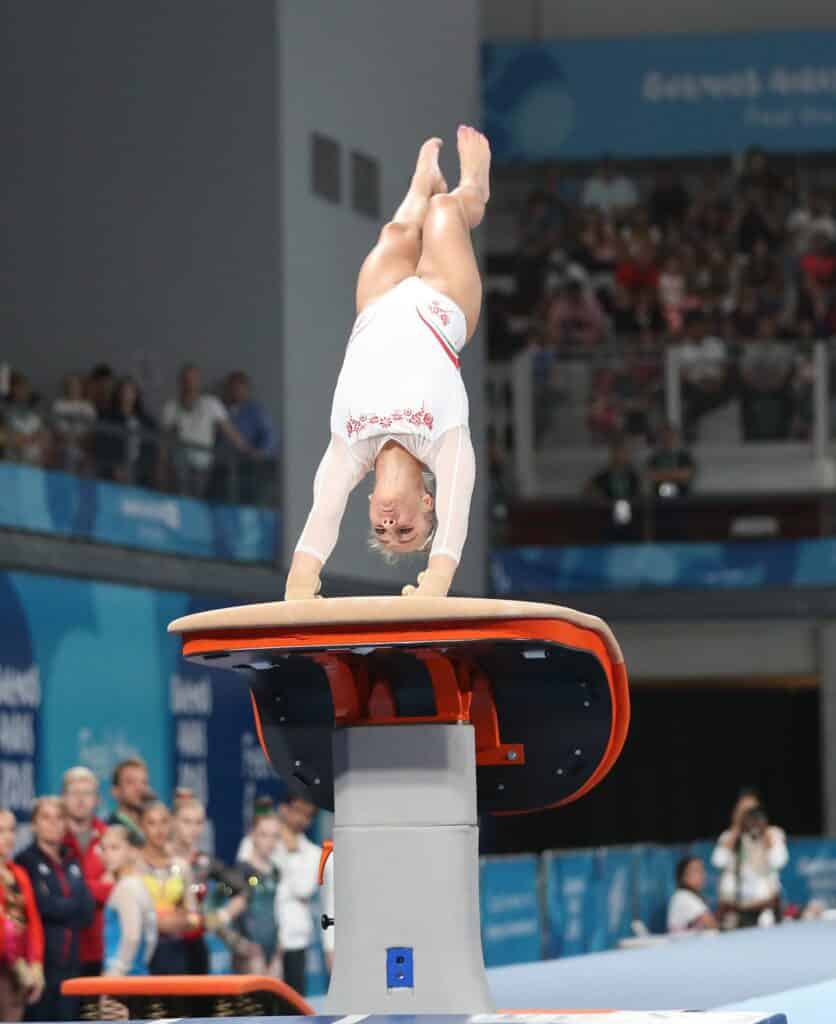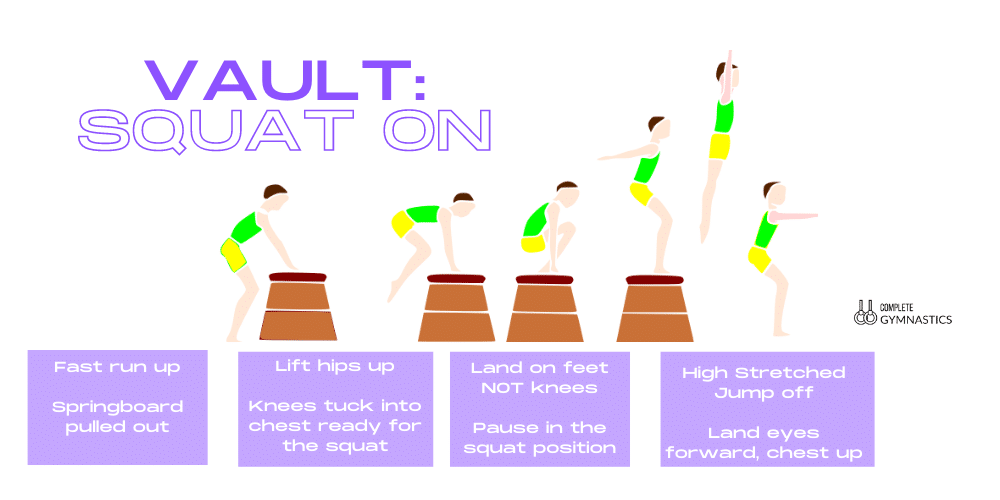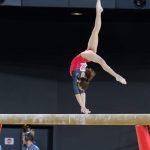Vaulting is a core skill in both Men’s and Women’s Artistic Gymnastics. Beginners often learn vaulting early on to build strength, coordination, and confidence so this Gymnastics Vault Skills List is essential reading for gymnasts wishing to progress further.
The vault can feel intimidating because of its height and the precision it demands, but mastering the basics is achievable with proper guidance.
This guide covers the essential vault skills every beginner gymnast needs to know to progress confidently, especially for competitions.
Let’s jump into this!

Disclaimer: Gymnastics carries an inherent level of risk. Information contained in this article does not replace the need for professional coaching in a recognized gymnastics facility.
Introduction to Vault Gymnastics Skills
Before learning vault skills, gymnasts must master the springboard and safe landings. Like all gymnastics techniques, vaults are taught step by step to build confidence and precision.
Coaches often use lower vaults or build up stacks of soft mats to teach beginners. Gymnasts also practice basic shapes like the tuck and stretch before progressing to full vault movements.
A good professional coach will also physically spot a gymnast in case something goes wrong. For that reason, it is always safer to learn how to vault in a professional gymnastics facility.
Squat On Vault
The Squat On Vault is one of the first vaults taught to beginners.
A gymnast will need to reach forwards with their arms as they jump.
After take-off, the legs will need to come up into a tuck shape and the feet should land on the top of the Vault. This is when we should see the Squat Shape (it looks like a crouch shape). It’s common to see beginner gymnasts land on their knees which is something they need to correct.
Feet and knees should land together between the hands. The gymnast pauses briefly to balance before standing and jumping off the vault onto the landing mat.
Any type of jump can be performed – Stretched, Tuck or Star jumps are the ones we usually start with.

Through Vault
A Through Vault is very similar to a Squat On Vault except the gymnast doesn’t stop on top of the Vault. Instead, they pass through the Squat shape and have the feet land directly on the landing mat.
The key to being able to master this Vault is pushing off the Vault with the hands. This will create an extra push to get over the vault and help the gymnast lift the chest ready to land.
Coaching points:
- Lift hips on take off and tuck knees in tightly as you pass over the vault
- Push off the vault with your hands
- Keep eyes forward, head and chest lifted as you land
Straddle On Vault
The Straddle On Vault is like the Squat On Vault, but the gymnast lands on the vault in a standing straddle position.
The straddle position involves straight legs, feet slightly wider than shoulder-width apart, and hands placed between the feet.
Legs should be straight and knees pushed back. Once a gymnast lands in the Straddle position, they stand up and slide their feet together into a stretched shape. They can then jump off the Vault to the landing mat.
The Straddle on Vault is harder to perform on modern Table-shaped Vaults as they are narrower compared to the old-style wide vaults of the 1970s and 1980s.
Coaching points:
- Lift hips on take-off.
- Ensure straight legs in the straddle position.
- Head forward and chest lifted for landing.
Straddle Over Vault
Once a gymnast has mastered the Straddle On they can develop this into a Straddle Over by not stopping on top of the Vault. Many gymnasts get nervous when attempting straddle over for the first time as it’s common for the feet to touch the vault.
The Straddle vault does not progress into higher difficulty vaults as unlike other skills, its performed with the feet apart. However, it is useful to learn as it can help build confidence.
Legs should stay straight and toes pointed as they pass over and around the Vault.
The arms should push off the Vault quickly to help lift the chest and land. Many gymnasts find this difficult as it is a scary Vault to learn but it results in them leaving their hands behind on the Vault, dropping the head and chest and making it hard to land on the feet.
Coaching Points:
- Lift arms and push off the vault
- Extend legs and point toes during the straddle shape
- Look forward on landing
Handspring Vault
The Handspring Vault and the remaining Vaults listed in this article begin to step up a difficulty level. Although still classed as beginner Vaults they take many months to learn and gymnasts will need to do regular strength and conditioning to prepare their body.
The Handspring Vault is usually the first vault where the gymnast inverts (goes upside down). Coaches often use a high stack of mats to help gymnasts practice landing safely on their back while learning this skill.
Because the Handspring Vault is a building block to more advanced Vaults, it is vital that good technique is learned from early on.
To perform a Handspring Vault, the gymnast takes off facing forward and passes through a Handstand shape when the hands contact the Vault. In more advanced versions of the Handspring, somersaults and twists are added before landing. however, a basic Handspring Vault simply lands on its feet after passing through Handstand.
Coaching points:
- Swing arms up and forwards on take off
- Strong heel drive towards handstand
- Push through the shoulders as the hands contact the vault
Round Off Vault (Half on)
The Round Off Vault belongs to the Tsukahara family of Vaults. The simplest way to describe a Round Off Vault is by performing a Handspring but adding a Half Turn before the hands contact the Vault.
This means the gymnast faces backward as they contact the Vault. For more advanced gymnasts they can then add somersaults, but a basic Half On will simply land on the feet after contacting the Vault.
Half on Half Off Vault
Once the Half On has been mastered, a gymnast can add another Half Turn after they contact the Vault. This will complete the Half On Half Off Vault.
A gymnast will need to have a good level of conditioning and understand the concept of twisting to be able to learn the Half on Half Off Vault.
Half on Full Off Vault
As the name suggests, the gymnast will need to complete a full 360-degree twist after contacting the Vault.
Most gymnasts will first learn the Half On Half Off and then add an extra 180-degree twist. They can even begin by doing the final Half Turn Jump after they land. The body should stay straight and extended throughout the whole Vault.
Conclusion
Vaulting in gymnastics requires courage and focus to master safe takeoffs and landings. Gymnasts build confidence by gradually increasing difficulty, step by step. Hopefully this Gymnastics Vault Skills List has given you a clear idea of the next steps you need to take.
The variations of Vault moves are huge and if you want to read more about the history of Vault check out our complete guide to the Vault. You can also read about some of the hardest Vault moves including The Yurchenko.
If you would like to learn Vault in a safe and professional environment check out our classes to find something ideal for you.
FAQs
What makes a good gymnastics vault?
A good gymnastics vault is judged on its speed, power, body form and control on landing. In a competition setting, judges will be impressed with the height created from the contact with the vault. This will also create more time in the air for gymnasts to execute higher levels of difficulty such as somersaults and twists.
What is the hardest vault skill?
In Women’s Gymnastics the Amanar, Produnova and Biles II are considered among the hardest female vault skills. Male gymnasts have peaked at slightly higher difficulties including the Handspring triple front, Ri Se Gwang and Yang Hak Seon.
How fast do gymnasts run for vault?
Gymnasts typically run toward the vault at speeds between 6 to 9 meters per second (m/s), depending on their skill level, the vault type, and the required power for the movement.
- Elite gymnasts often reach the higher end of this range (8–9 m/s) to generate maximum power for high-difficulty vaults.
- Beginner or intermediate gymnasts may run closer to 6–7 m/s as they focus on control and technique.
These speeds ensure they generate enough momentum for an explosive takeoff while maintaining precision for the vault itself.
Sources:
Women’s Artistic Code of Points
- How To Get Over a Mental Block In Gymnastics: A Complete GuideGymnastics is a sport that requires not only physical strength and skill but also mental strength. When a gymnast feels like they cannot attempt a… Read more: How To Get Over a Mental Block In Gymnastics: A Complete Guide
- Find The Best Leotard For Girls (Guide)Finding an ideal leotard for girls isn’t just about picking a dazzling design that sparkles (although it does help!). The leotard has to fit perfectly,… Read more: Find The Best Leotard For Girls (Guide)
- The Best Gymnastics Shorts (Our Top Picks)The best gymnastics shorts are designed to be worn over the top of a leotard providing additional coverage around the upper legs, whilst allowing gymnasts… Read more: The Best Gymnastics Shorts (Our Top Picks)
- Decathlon Leotards – Are They Any Good?If you’re in the market for a new leotard, you may be wondering if Decathlon leotards are any good considering the low cost of their… Read more: Decathlon Leotards – Are They Any Good?
- A Complete Guide to Gymnastics Hand RipsAre you tired of dealing with painful gymnastics rips on your hands from training? Look no further – this article offers a comprehensive approach to… Read more: A Complete Guide to Gymnastics Hand Rips
- Is Gymnastics Dangerous? (Facts and Comparisons)In this article, we analyse all of the risks associated with gymnastics in order to answer the question Is gymnastics dangerous? Gymnastics is acknowledged as… Read more: Is Gymnastics Dangerous? (Facts and Comparisons)






